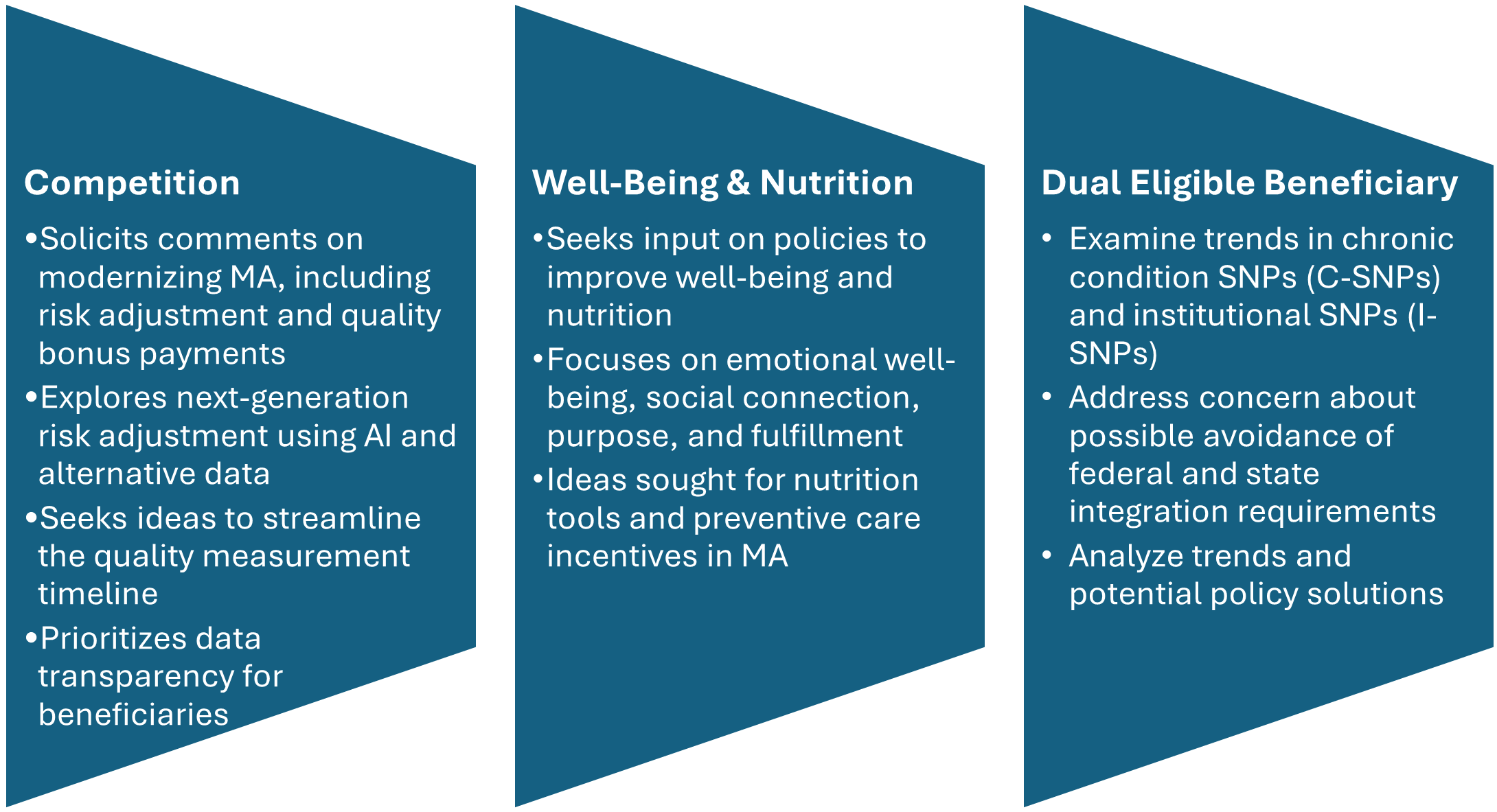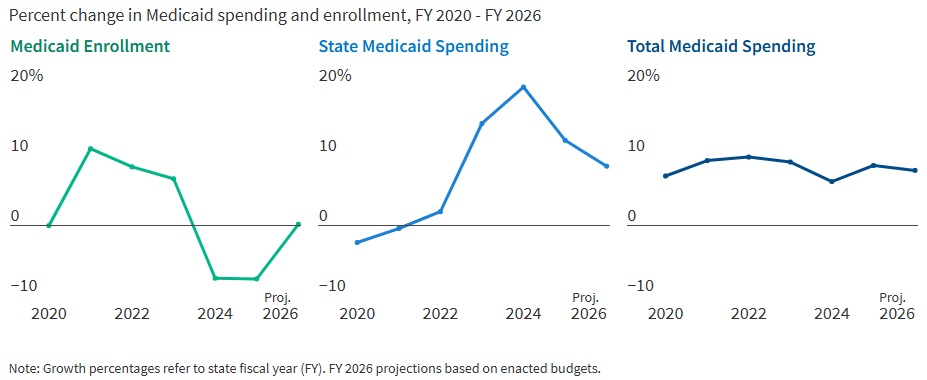On December 8, 2025, the Centers for Medicare & Medicaid Services (CMS) issued anticipated guidance on Medicaid community engagement requirements, as established in the 2025 budget reconciliation legislation (P.L. 119-21, referred to as OBBBA). This guidance arrives at a pivotal moment, as states begin budget planning and legislative sessions.
Health Management Associates (HMA) reviewed the guidance in the context of other policy and financing shifts that are affecting the Medicaid program. This article highlights key takeaways, addresses considerations for implementation, and issues for policymakers and healthcare organizations to track.
Brief Background
Generally speaking, Section 71119 of OBBBA requires states to implement community engagement requirements as a condition of Medicaid eligibility for individuals in the expansion population ages 19−64 who are neither pregnant nor enrolled in Medicare or any other mandatory Medicaid group. The guidance explains the statutory requirements related to how states verify community engagement, notify applicants and beneficiaries, ensure compliance with federal standards as the January 2027 deadline approaches, and other core components of the policy.
Starting January 1, 2027, states must require certain Medicaid expansion applicants to demonstrate community engagement for at least one month and may require up to three consecutive months immediately prior to the month of application. If compliance or exemption status is unverifiable at the time of application, states must provide notice and an opportunity to respond. These enrollees will maintain coverage during the response period. States are also expected to establish clear documentation standards and proactive communication processes for applicants and enrollees.
Three Key Takeaways from the Initial Guidance
1. Organizations must understand the key dates leading up to January 1, 2027
Limited new funding and tight timelines make January 1, 2027, a critical deadline for implementation. Medicaid organizations need to consider, however, the full sequence of events leading up to that date, including providing required advance notification to individuals about the changes and their eligibility status. Documentation and progress tracking are essential, both for compliance and to demonstrate that CMS deadlines are being met.
Although the guidance outlines notice and response requirements, it leaves open critical questions about how states will prevent procedural disenrollments, manage increased appeals volume, and mitigate due process legal risk if eligibility and verification systems fail at scale.
2. Medicaid managed care organizations (MCOs) have a limited role in decision-making but are key to engagement
Medicaid managed care organizations are prohibited from making the determination that an individual has met the community engagement requirement; however, they have an opportunity to support individuals in a range of ways. Recent changes under OBBBA give plans clearer authority to conduct proactive outreach on eligibility and renewal requirements, which strengthens their ability to help members navigate deadlines, reporting expectations, and documentation needs. This capacity will be important because a lack of predictability in enrollment and churn can meaningfully affect the risk profile of plans and, as a result, increase volatility in provider negotiations.
Plans, providers, community organizations, and state and local agencies can collaborate to develop effective engagement strategies, aligned messaging, and ongoing touch points. Helping members understand what is required—and when—and connecting them with resources to take action will be essential for successful implementation.
3. States and partner organizations need a global view of IT changes and functionality
CMS emphasizes that the eligibility determinations for the community engagement requirements should function seamlessly with new and existing system functionality. Meeting this expectation requires states to have a deep understanding of whether and how policies can be operationalized in their systems without adding administrative burden for individuals and others that engage with the systems.
Meeting federal expectations may be particularly challenging for states with county-based Medicaid systems, as implementing these requirements across multiple jurisdictions may necessitate a longer transition period. The OBBBA includes $200 million in total grant funding for implementation activities in 2026, and states can apply for enhanced federal IT funding at the 90/10 or 75/25 rates for certain costs and activities. Federal resources are otherwise limited, so it is critical that states and partner organizations establish a well-defined strategy to maximize available funding to support the system changes required to implement OBBBA eligibility requirements.
What to Watch
The guidance arrives as many governors begin releasing their budget proposals and planning for upcoming legislative sessions. Although the guidance provides clear information on the overarching parameters and a preliminary road map, certain critical details are forthcoming. State budgets should reflect the requirements and anticipate the need for rapid system and process development.
CMS will issue an interim final rule by June 1, 2026, and states must implement the community engagement requirement no later than January 1, 2027. States must comply with these requirements and act quickly to develop, pay for, and implement new systems, policies, and processes—ideally before the latter half of 2026.
CMS is developing additional guidance in several areas, including:
- Use of reliable data sources and how to satisfy the definition of engagement
- Implementation of the requirement to conduct renewals every six months for certain individuals
- Specific documentation requirements for community engagement
- Potential role that managed care plans can play unrelated to determining beneficiary compliance
States and Medicaid organizations should closely monitor these developments and be prepared to adjust their strategies as new information becomes available.
Connect with Us
HMA’s experts are trusted problem solvers, partnering with states to navigate the complexities of community engagement planning, even as requirements and details continue to evolve. Drawing on deep state and federal experience, as well as lessons learned from previous large-scale eligibility reforms, our team helps Medicaid-focused organizations quickly design and implement practical, context-specific strategies that align with OBBBA requirements. Whether it’s strategy development, system design, or crafting effective messages, HMA brings a flexible, solutions-oriented approach to maximize continuity of coverage and meet each client’s unique needs.
Contact our featured experts below to discuss how we can support your team in navigating these changes and building effective engagement strategies.


